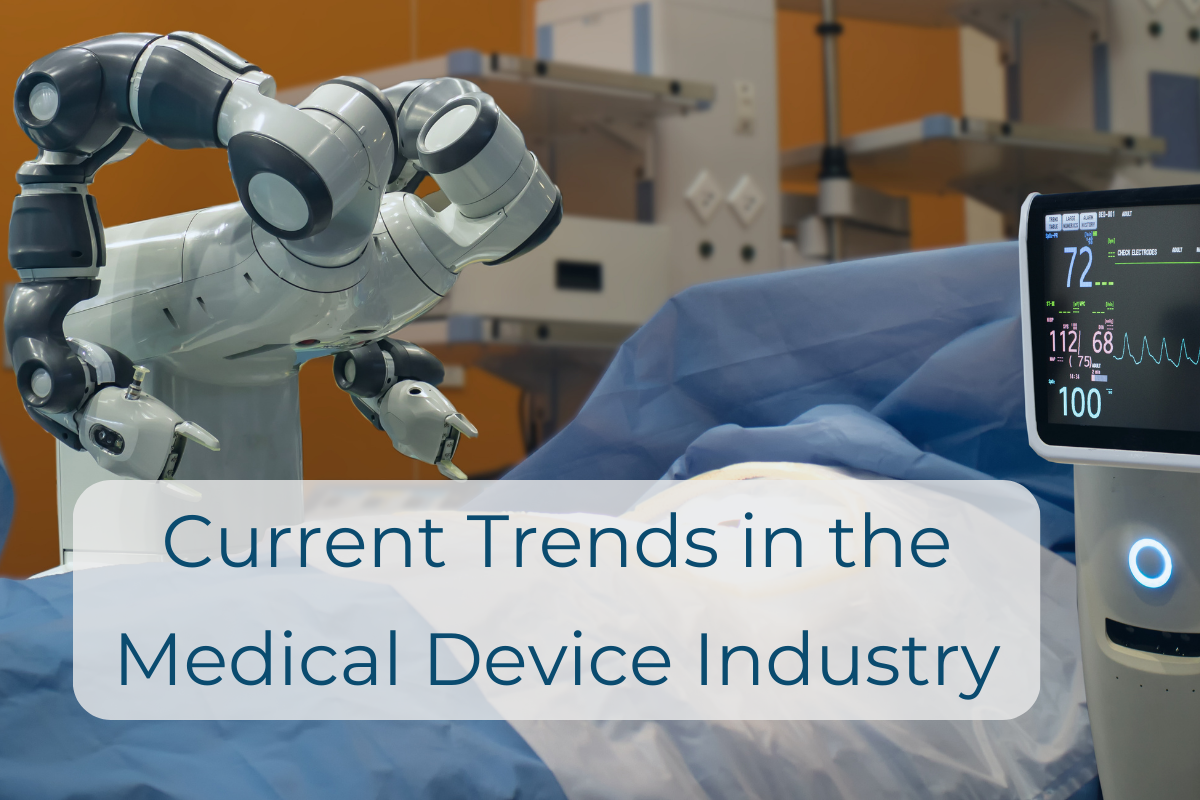Medical Device Industry Trends 2023
The medical device industry is robust and growing. As of 2022, the annualized growth rate of the industry is predicted to average 5.5%, reaching $719 billion in 2029. Several developments are contributing to this growth worldwide, including the further proliferation of artificial intelligence, the increased popularity of remote patient care, and persistent cybersecurity concerns.
Here are some current trends in the medical device industry that are predicted to further shape the manufacturing landscape in the years to come.
Artificial Intelligence and Machine Learning
We have yet to see all the ways artificial intelligence will impact the medical device industry, not to mention every other industry in work and life. The FDA has created an action plan for software as a medical device (SaMD) products that use AI and ML in September 2021. One of the biggest benefits the FDA cites for these devices comes from the ability of these technologies to use real-life experiences to improve performance, deliver improved patient care, and assist healthcare providers in doing their jobs more effectively, including detecting and treating diseases.
Outside of software, industry experts expect AI to play a larger role in other emerging technologies, such as wearables, robotics, virtual health assistance, labs, and data analysis.
Cybersecurity and Data Breaches
The healthcare industry has been a major target for cybercriminals, and as medical devices become more connected, this risk is likely to grow. Standards organizations have developed best practices in response to these risks. UL, for example, offers a cybersecurity assurance program (CAP) to help organizations manage their risks and demonstrate their cybersecurity capabilities. As regulatory guidelines change, manufacturers need to stay up-to-date on required compliance measures.
Global Surgical Robotics
Routine tasks may be increasingly fulfilled by robotics to close the gap in staffing shortages and ease the workload of nurses experiencing burnout. Robots have been used in healthcare settings to make more precise incisions, disinfect hospital rooms, provide therapeutic benefits to patients with dementia, deliver targeted radiation therapy, and transport materials across a hospital. Some robots can even be remotely controlled.
Remote Monitoring and IoT Devices
The internet of things (IoT) market may be most recognizable in devices found in the home – smart speakers, lights, fridges, locks, and more. However, the IoT market is also on the rise in the healthcare industry. Remote patient monitoring is a prominent domain for IoT devices. Data such as blood pressure, heart rate, and temperature can be collected remotely via a device, allowing practitioners to monitor and flag any necessary treatments or other interventions.
3D Printing
Supply chain disruptions may have set off a greater demand for 3D-printed components, but this additive manufacturing can be a more convenient option in general for hospitals that have an urgent onsite need for certain components. This may also provide another business line for manufacturers who can create digital blueprints for 3D printers.
3D printing is a great method for designing and creating devices that are patient-specific and match the particular anatomy of an individual. The FDA has created online content and guidelines that address 3D-printed components.
ESG
Medical device manufacturers looking to stand out in the industry may want to invest more in environmental, social, and governance (ESG) practices. Different business sizes and industries are beholden to different compliance standards when it comes to sustainability, but even those that aren’t being asked to fulfill regulatory requirements may find a business benefit and powerful differentiation from improving ESG-related processes. Providers are increasingly using ESG factors, including data security, labor standards, energy efficiency, and packaging when deciding what to purchase.
Whatever the medical device industry has planned next, RAM Technologies can be with you every step of the way. Our PC-based PSUs will be around for the life of your device and can be customized to match your cabling and other specific needs. Reach out to us with any questions and to place an order.
RAM Technologies’ power supplies are 60601-1 3.2 certified and meet 60601-1-2 EMC standards. When you’re designing your medical device and need help with a PSU, contact us for details.
More Resources:
Global Medical Device Industry Statistics
Downloadable Guide to IEC 60601-1
U.S. Medical Device Market Size – Should You Seek FDA Approval?
Europe’s Medical Device Market Size – Should You Sell in the EU?



